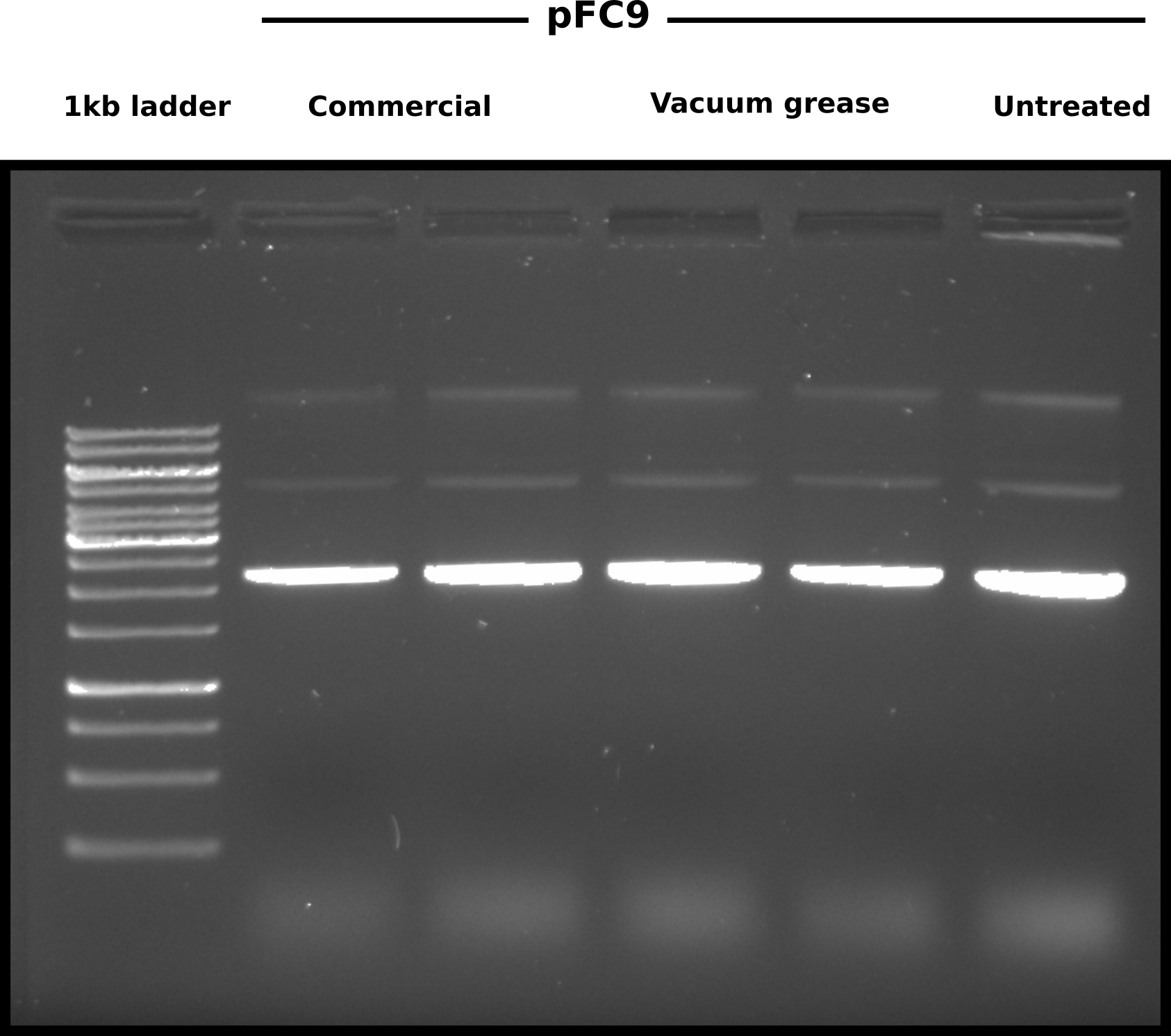Homemade phase lock column test: 1/6/22 #
While I was thinking about and writing out a protocol for IVT for bisulfite conversion I realized I was going to burn through a lot of phase lock columns if I continued to incoroporate these into the protocol for the phenol extraction step. At most, I would end up using three columns per sample (1 for control, 1 for RnaseH treated and 1 for transcribed - RnaseH) at about $1 per tube.
I stumbled across this post on r/labrats that claimed Dow Corning High Vacuum Grease was nearly chemically identically to the gel used in commercial phase lock columns. Multiple other users echoed this method so I thought I would give it a try and bought a tube to test against the commercial version.
Protocol #
I prepared four samples, 2 replicates of each column type and added 198 ul of npH20 and 2 ul of pFC9 (600 ng) to each column. I then added 1 volume (200 ul) of Phenol:Chloroform:Isoamyl Alcohol 25:24:1 to each and vortexed to mix. To prepare the homemade columns I filled a 10 ml syringe with the vacuum grease and autoclaved for 15 minutes. After being allowed to cool to room temperature I added ~200 ul to 2 ml tubes using the syringe.
Sample table #
| Sample number | Plasmid | Plasmid mass (ng) | Column type |
|---|---|---|---|
| 1 | pFC9 | 600 | Commercial (high density) |
| 2 | pFC9 | 600 | Commercial (high density) |
| 3 | pFC9 | 600 | Vacuum grease |
| 4 | pFC9 | 600 | Vacuum grease |
After mixing I centrifuged at 12,000 g for 5 minutes and removed the top layer from all samples into a new tube (layers were cleanly separated in the homemade columns).
I then preformed a standard EtOH precipitation (2.2 volumes EtOH 0.1 volume sodium acetate) with 2 ul glycogen. Froze all samples at -80C for 25 mins and then spun at 14,000 rpm for 30 minutes to pellet the DNA. Washed twice with 200 ul 70% EtOH and then re-suspended in 20 ul TE.
Agarose gel #
Ran all samples on 0.8% 1x TAE EtBr gel at 100V for 1 hour. For the untreated control I used 2 ul (600 ng) of pFC9 to access if any sample was lost during precipitations.

From these results there is no difference in yield between commercial or homemade vacuum grease columns.